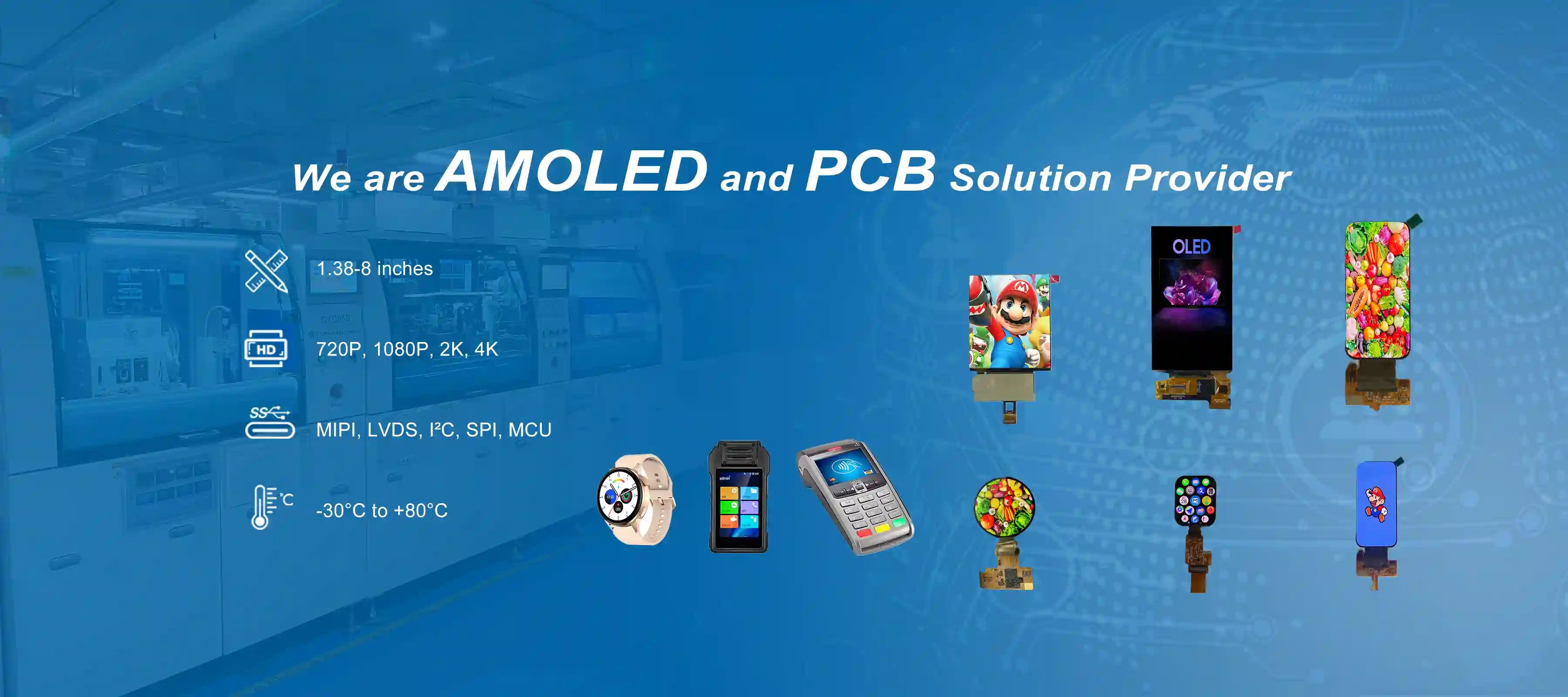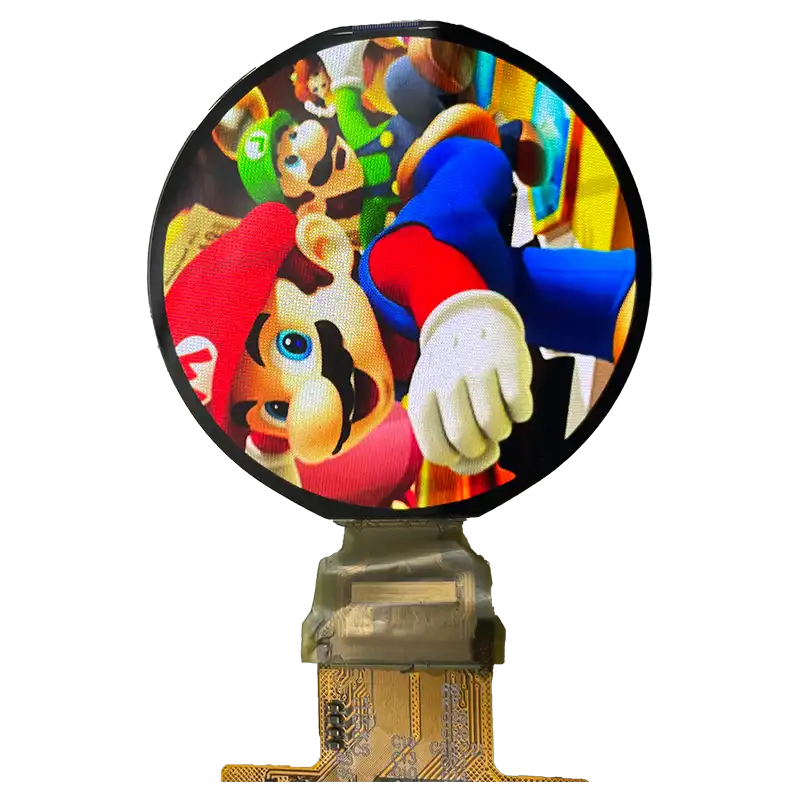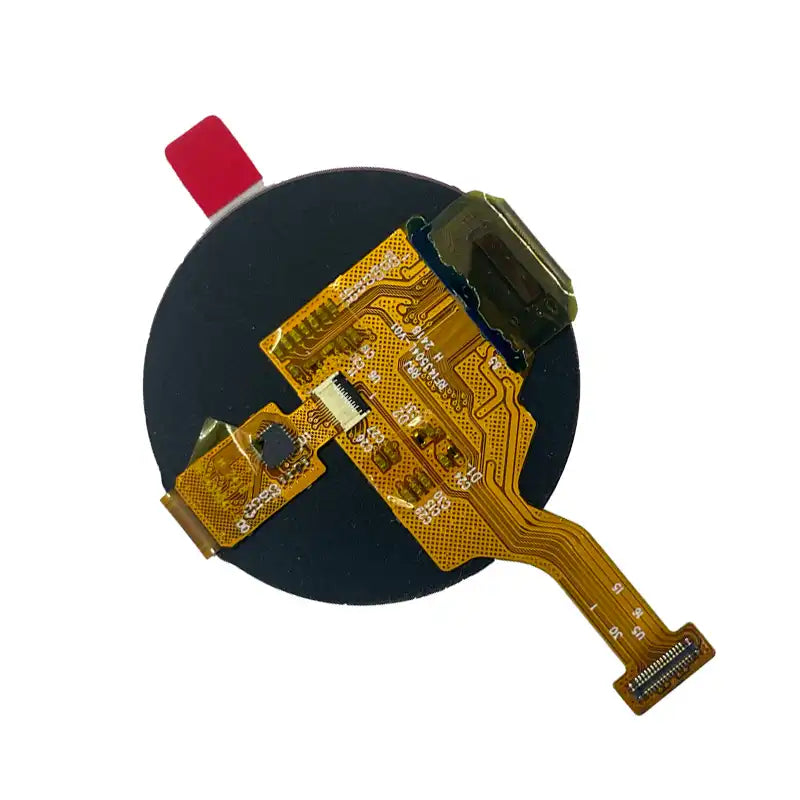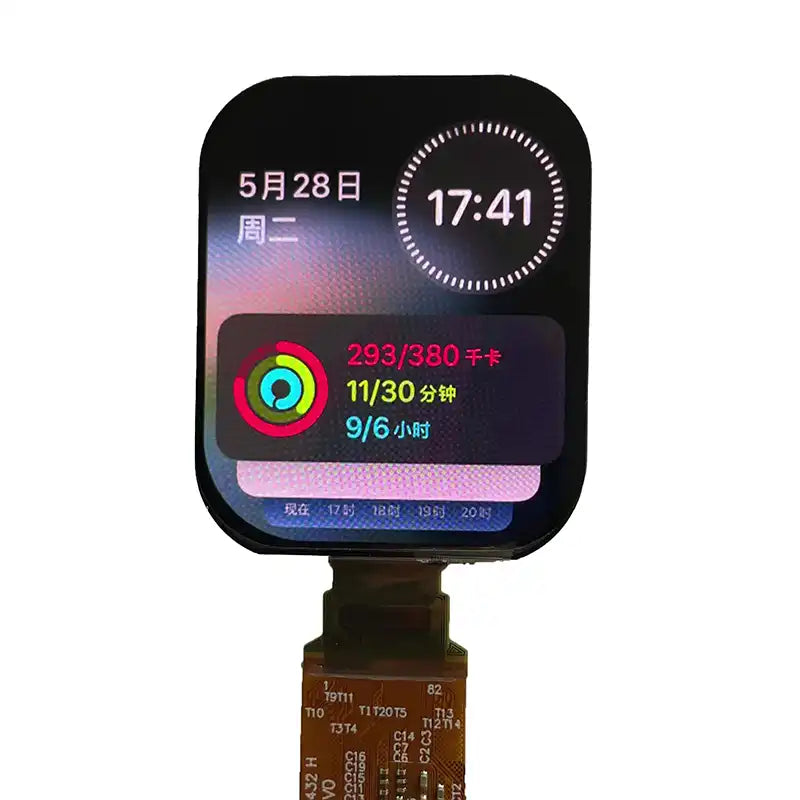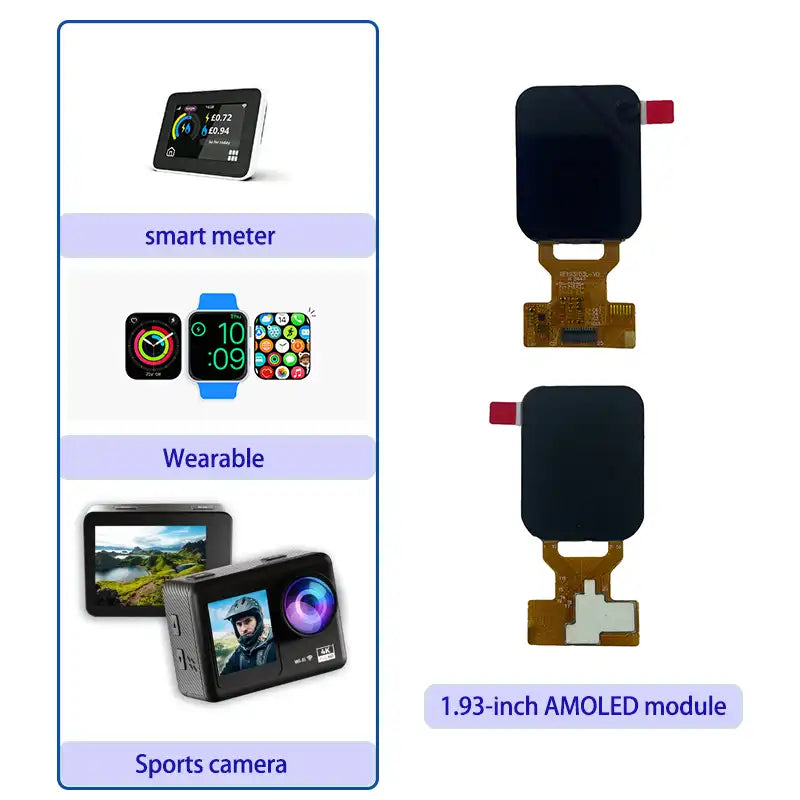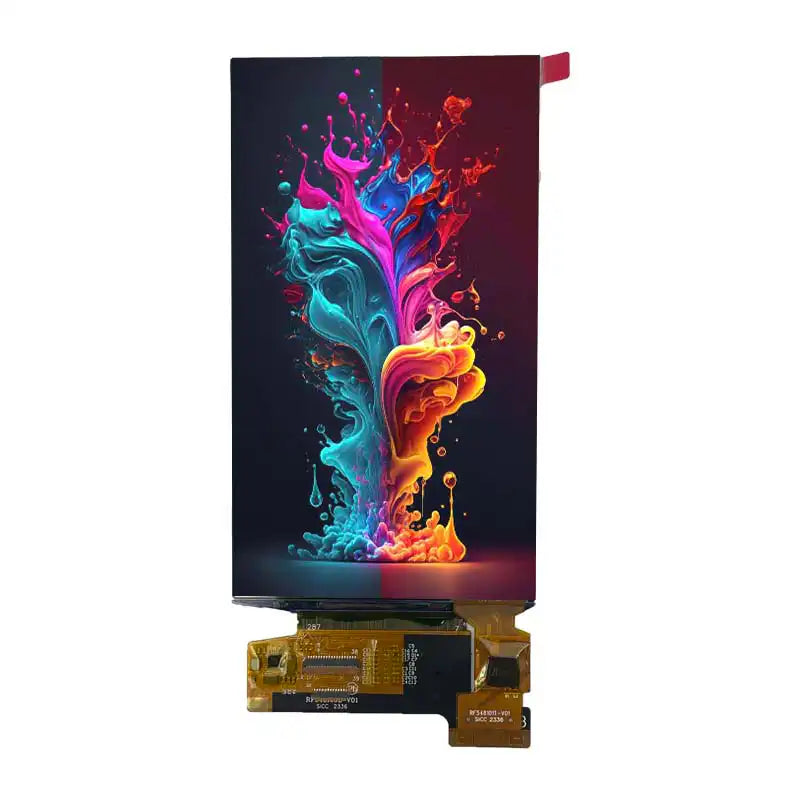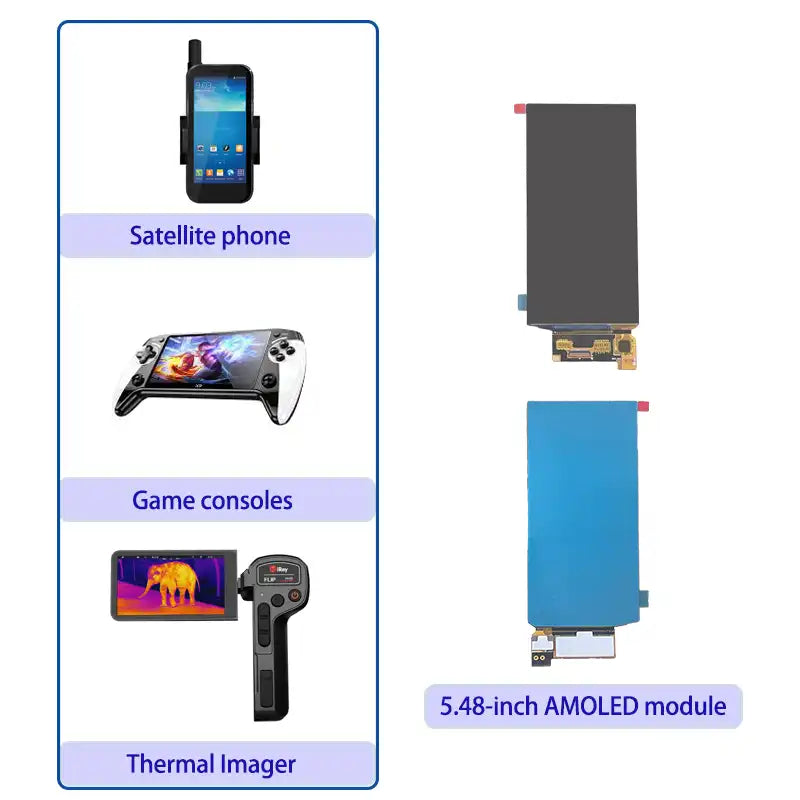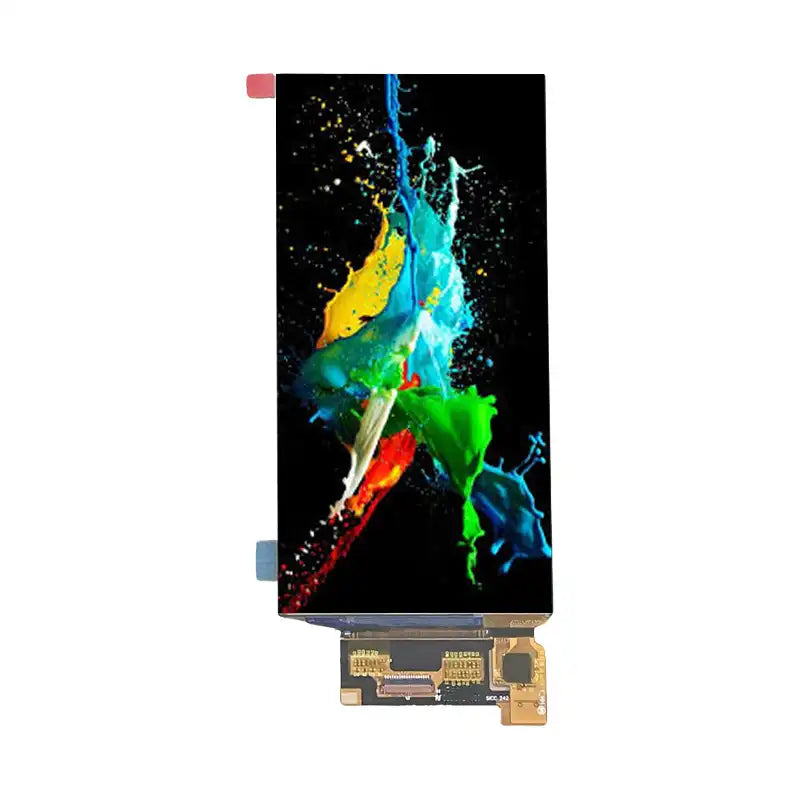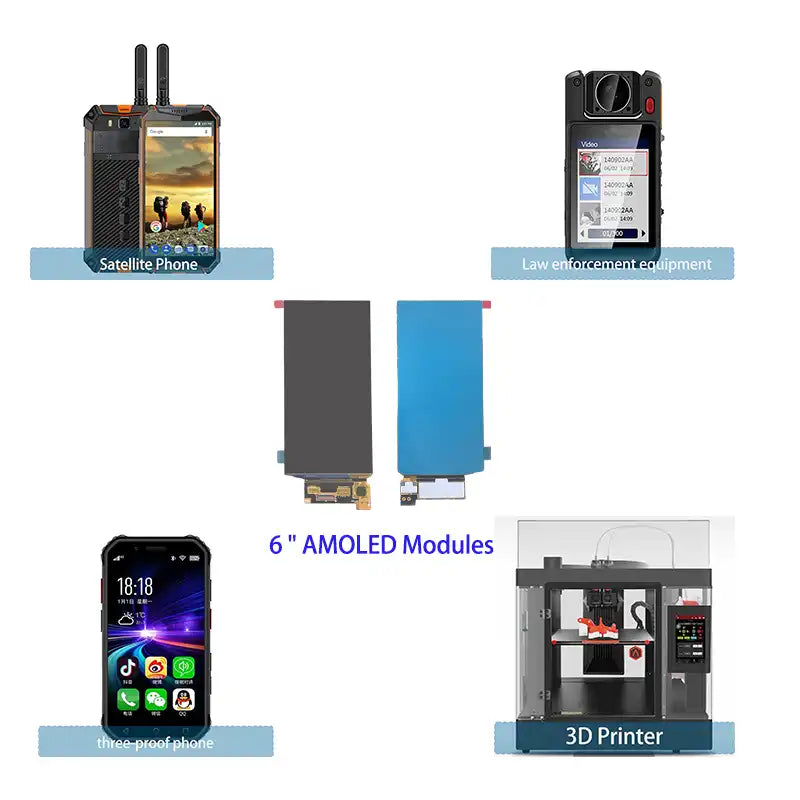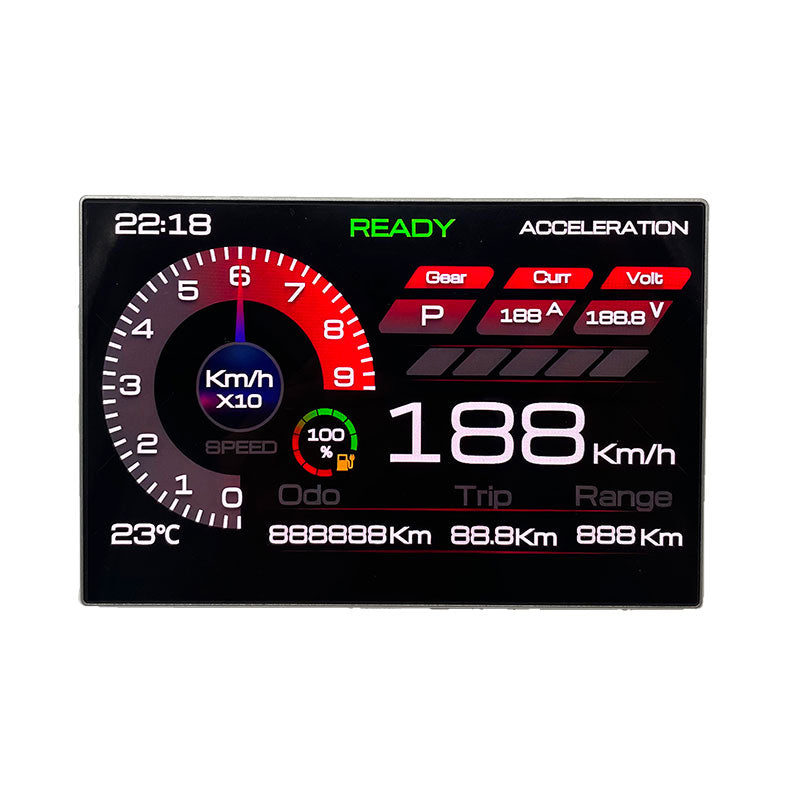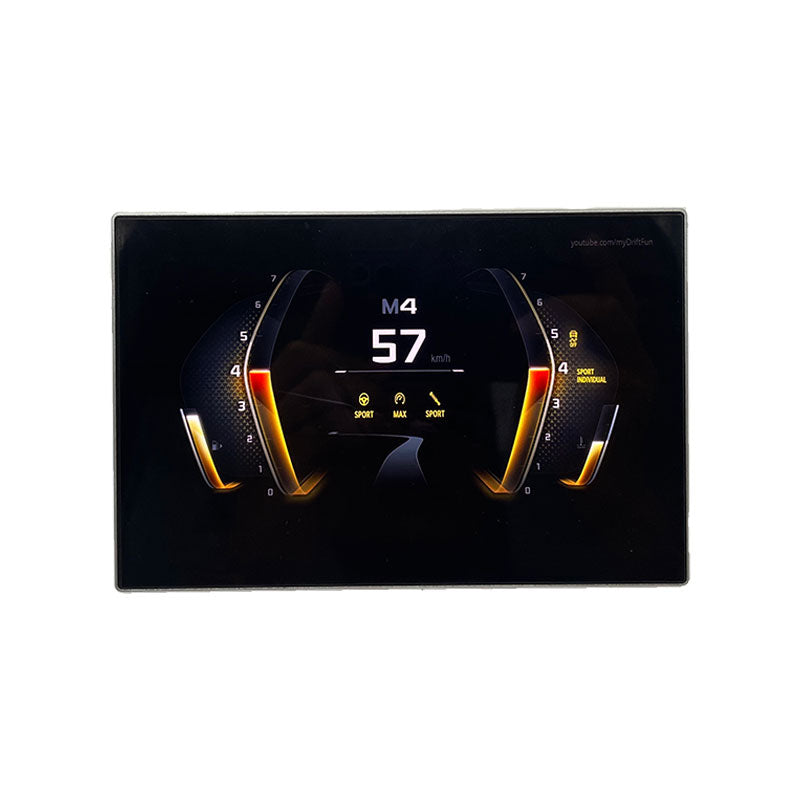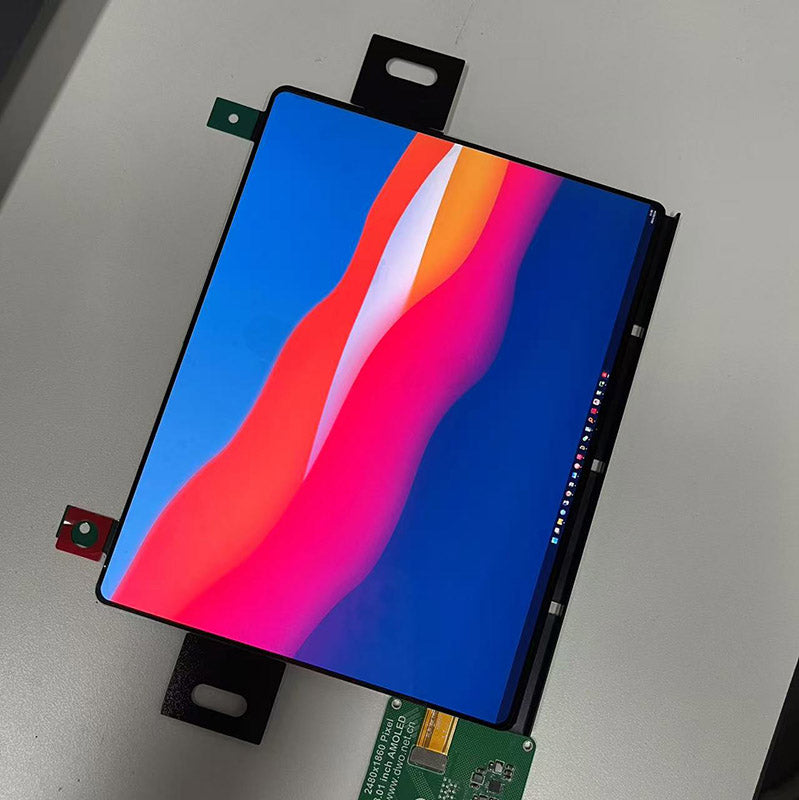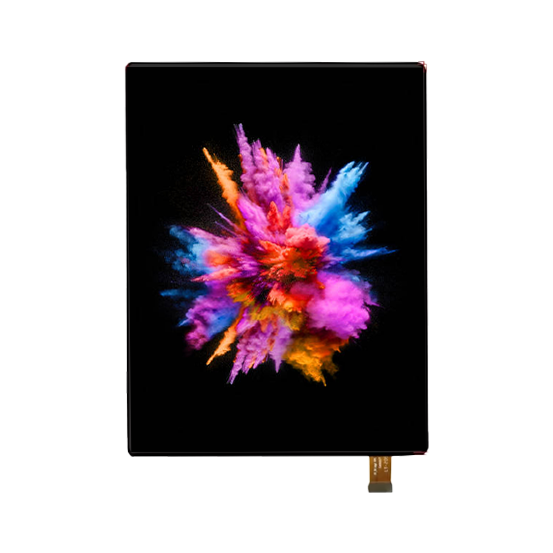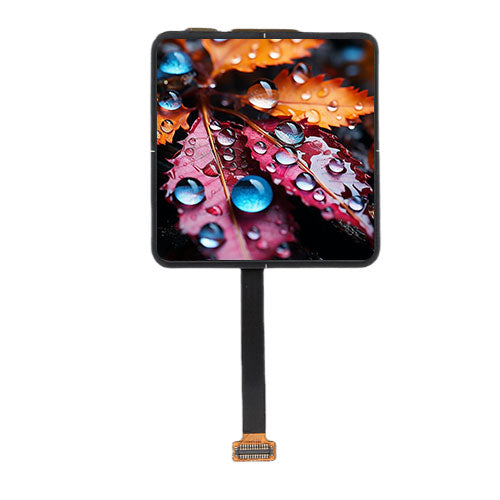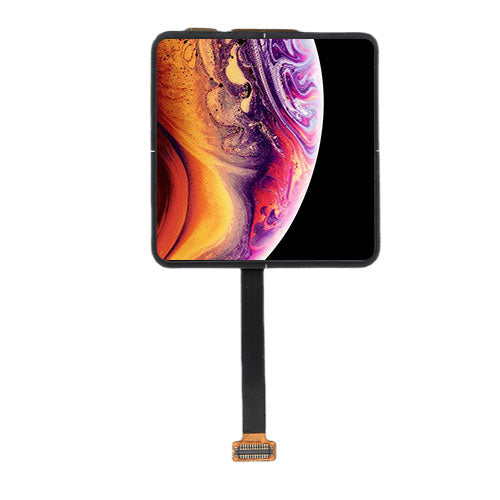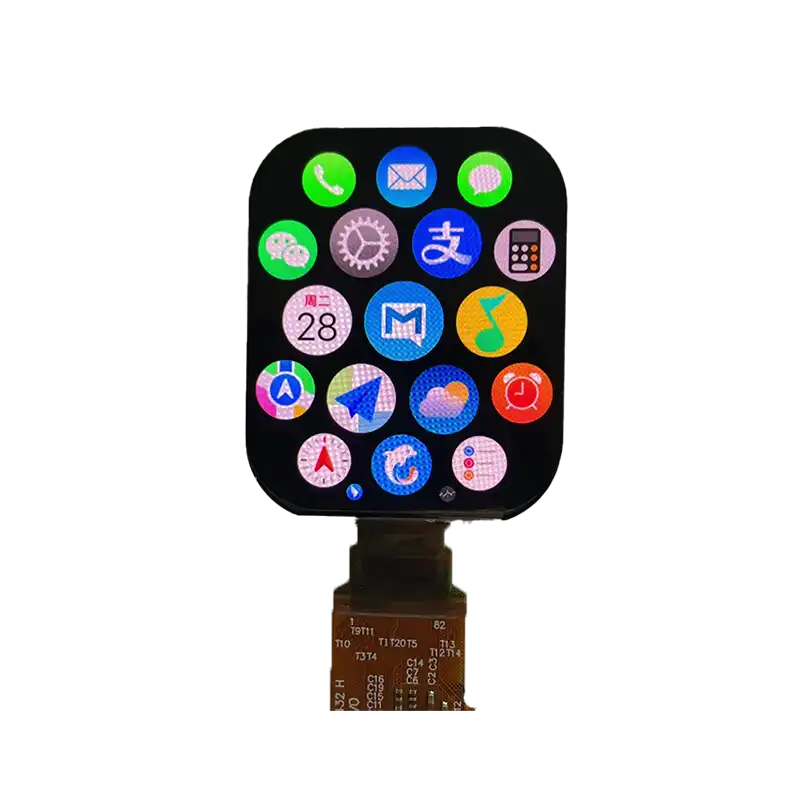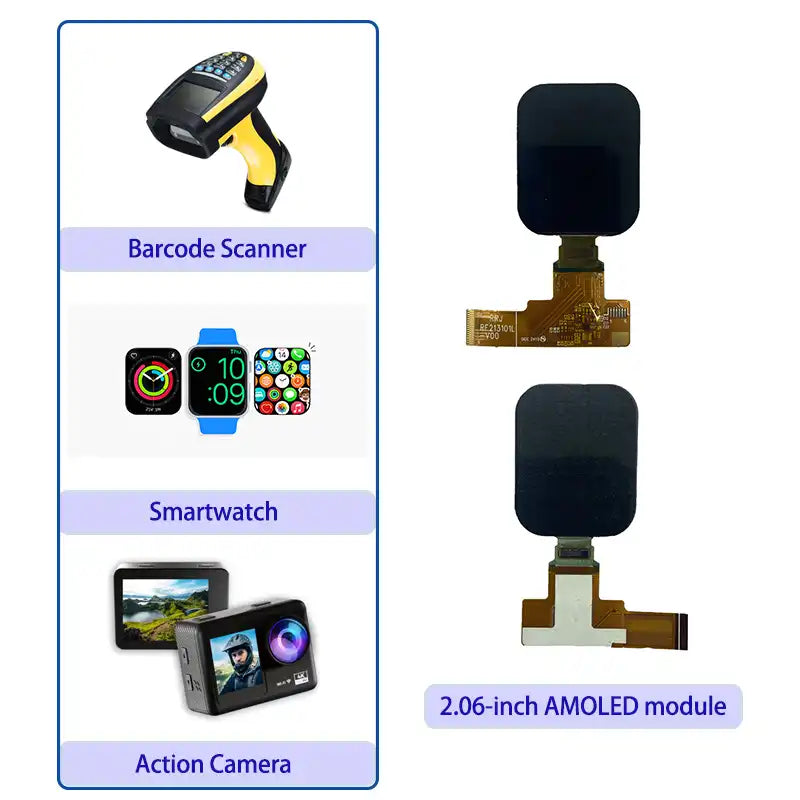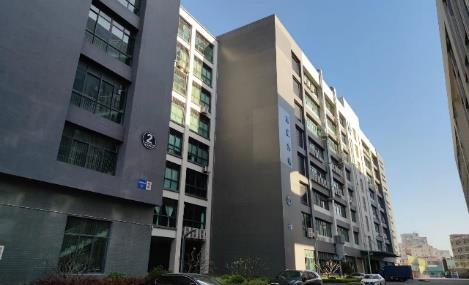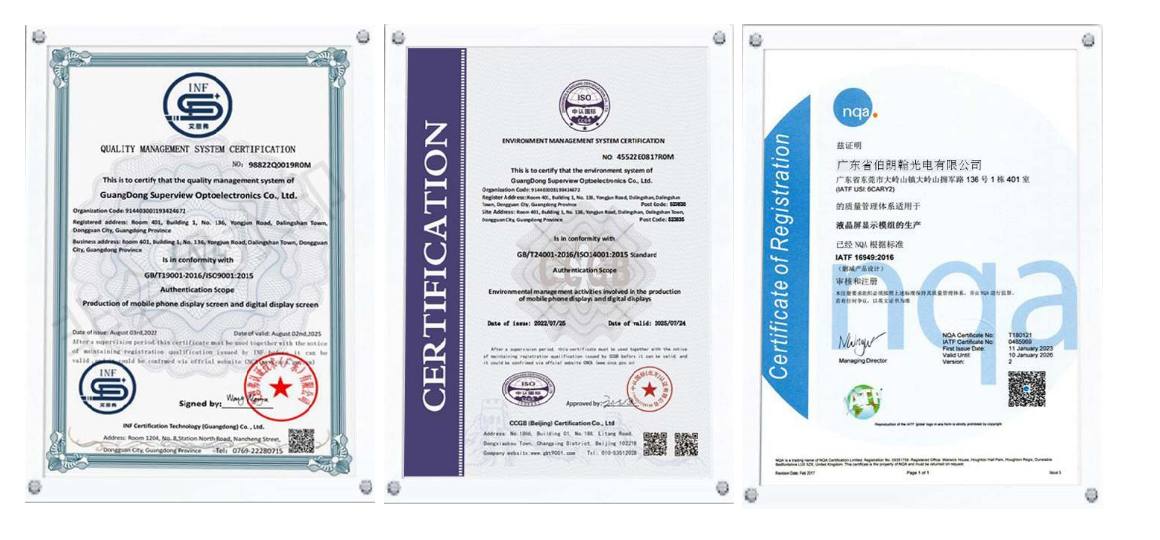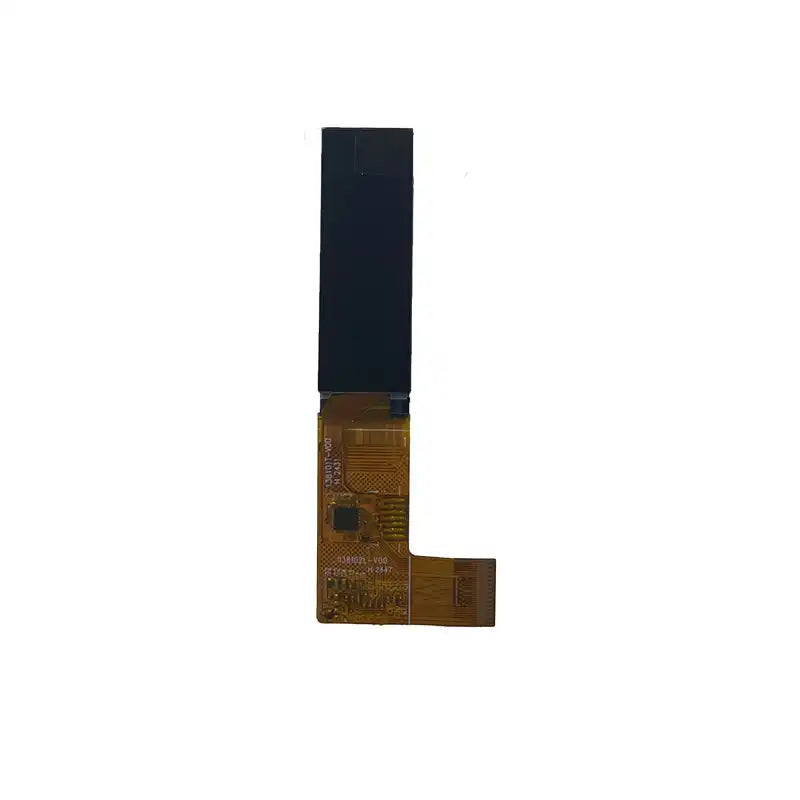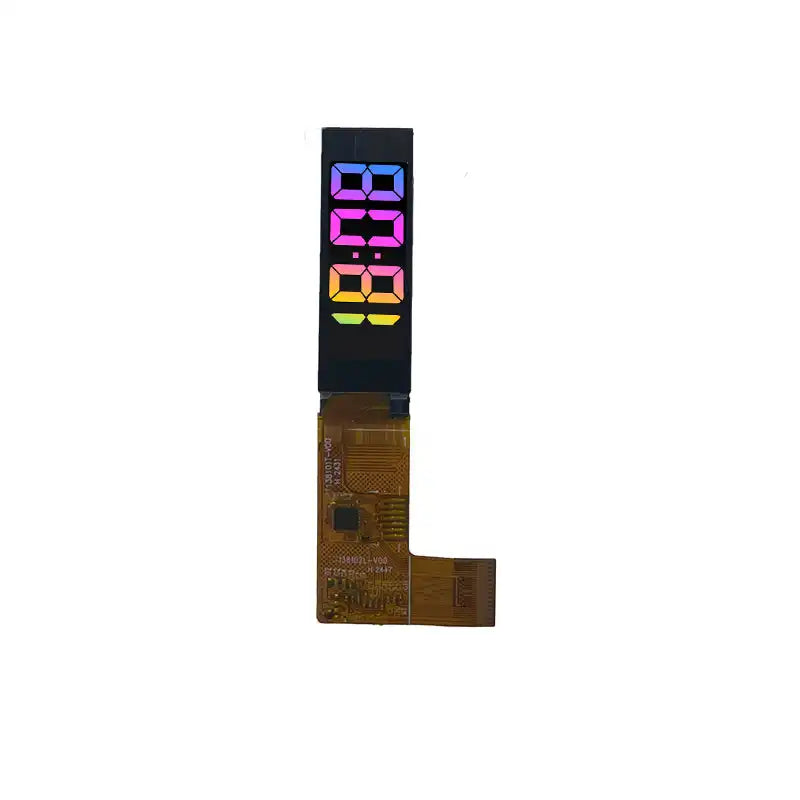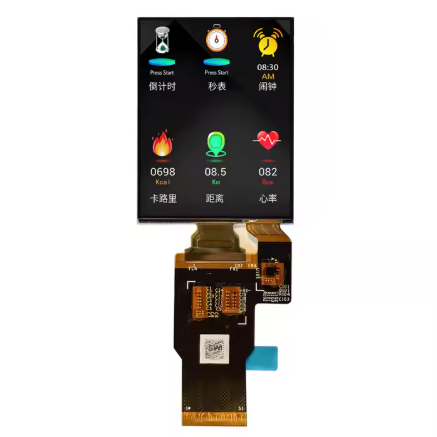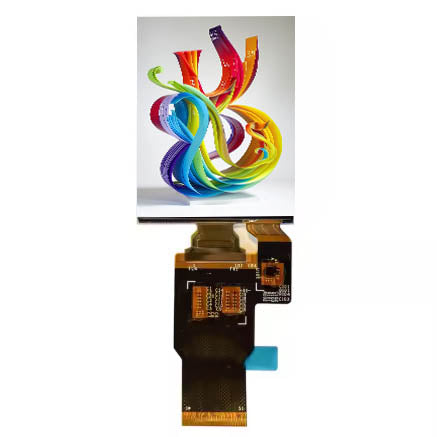AMOLED Displays & Custom Solutions | Brownopto
Core Performance Advantages
AMOLED Size Matrix (1.38” – 8.0”)
Industry Applications & Solutions
Customization & Engineering Support
Reliability & Environmental Performance
Why Choose Brownopto?
Explore Our AMOLED Product Series
AMOLED Technology: How It Works
Active-Matrix Organic Light-Emitting Diode (AMOLED) is a self-emissive display technology where each pixel generates its own light. Unlike LCDs, no backlight is required, enabling true blacks, infinite contrast, and ultra-thin profiles.
Powered by LTPS or IGZO TFT backplanes, AMOLED delivers precise pixel control, sub-0.1ms response, and superior energy efficiency—making it ideal for high-performance applications in wearables, automotive, and industrial devices.

Core Performance Advantages
AMOLED Size Matrix (1.38” – 8.0”)
Brownopto offers a full range of standard and customizable AMOLED displays. All models support MIPI, SPI, or RGB interfaces, optional touch, and industrial temperature ranges.
| Parameter | AMOLED Performance | Technical Benefit |
|---|---|---|
| Contrast Ratio | ∞:1 (True Black) | Perfect image depth, ideal for dark UIs and outdoor readability |
| Response Time | <0.1ms | No motion blur, perfect for automotive dashboards |
| Power Efficiency | Up to 70% lower with dark UI | Extends battery life in wearables and portable devices |
| Viewing Angle | ≥178° (H/V) | No color shift or brightness loss at wide angles |
| Thickness | As thin as 0.6mm | Enables ultra-slim and flexible designs |
| Brightness | 500–1000+ nits | Suitable for automotive and industrial environments |
| Size (") | Type | Resolution | Form Factor | Applications |
|---|---|---|---|---|
| 1.38 | Square | 400×400 | Narrow Bezel | Wearables, Health Monitors |
| 1.43 | Round | 480×480 | Round Display | Smartwatches, Circular HMIs |
| 1.93 | Square | 400×400 / 480×480 | Ultra-slim | IoT Devices |
| 2.00 | Square | 320×320 / 400×400 | Industrial Grade | Medical, Handhelds |
| 2.40 | Square | 240×320 / 320×480 | MIPI/RGB | Industrial HMI, Smart Home |
| 3.92 | Square | 400×400 / 480×480 | High Brightness | Automotive, Mirrors |
| 4.39 | Rectangular | 480×800 | Bezel-less | Car Infotainment, Panels |
| 5.48 | Square | 720×720 / 1080×1080 | Multi-window | Smart Cockpit |
| 6.01 | Square | 1080×1080 | Optical Bonding | Automotive Displays |
| 7.00 | Rectangular | 1200×1920 | 60Hz | Industrial Control |
| 8.00 | Rectangular | 1200×1920 / 1080×1920 | Multi-touch | Large HMI |
Industry Applications & Solutions
- Wearables: Compact AMOLEDs for watches and trackers.
- Automotive: High-brightness, wide-temperature displays.
- Industrial: Rugged HMIs with EMI resistance.
- Medical: High-contrast screens for monitors.
- Smart Home: Stylish, interactive displays.
Customization & Engineering Support
We provide end-to-end customization for shape, interface, touch, optics, and mechanics. Highlights include:
- Custom cutouts: round, oval, or irregular
- Interfaces: MIPI DSI, SPI, RGB
- Touch: capacitive, resistive, glove-mode
- Optical enhancements: AR/AF/AG coatings
- Support: FPC design, thermal, mounting
Reliability & Environmental Performance
- Operating Temp: -20°C to +70°C standard
- Storage Temp: -40°C to +85°C
- Lifetime: ≤5% brightness decay @ 10,000 hrs
- Burn-in Mitigation: Pixel shift, dynamic refresh
- Tests: Thermal cycling, humidity, vibration
Why Choose Brownopto?
- ✅ Specialist: 8+ years in AMOLED
- ✅ Full Customization: From design to production
- ✅ Industrial & Automotive Ready: High reliability
- ✅ Fast Turnaround: Samples in 2–3 weeks
- ✅ Stable Supply: ISO9001 certified
Explore Our AMOLED Product Series
Ready to integrate high-performance AMOLED into your next product?
Featured collection
How to Choose the Right AMOLED Display (1.38–8.0") for Your Application
Choosing the right AMOLED display is key to performance and reliability. From 1.38–8.0 inches, this guide covers seven factors to help you decide.
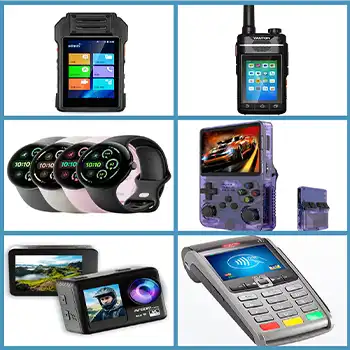
AMOLED needs differ by industry. Wearables (1.38–2.4") require compact size, low power, and outdoor readability. Industrial handhelds (3–5") focus on durability. Automotive dashboards (7–8") demand high brightness and wide temperature tolerance. Start with your exact use case.
AMOLED needs differ by industry. Wearables (1.38–2.4") require compact size, low power, and outdoor readability. Industrial handhelds (3–5") focus on durability. Automotive dashboards (7–8") demand high brightness and wide temperature tolerance. Start with your exact use case.

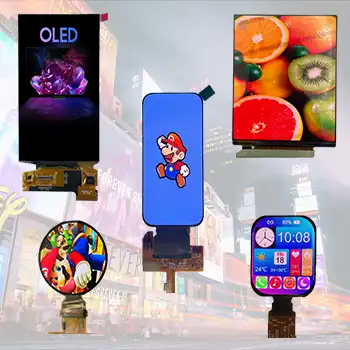
Choose dimensions that match your product housing. Round and square modules suit watches, while rectangular panels suit handhelds and consoles. Always confirm bezel size, active area, and mechanical fit to avoid costly redesigns.
Choose dimensions that match your product housing. Round and square modules suit watches, while rectangular panels suit handhelds and consoles. Always confirm bezel size, active area, and mechanical fit to avoid costly redesigns.

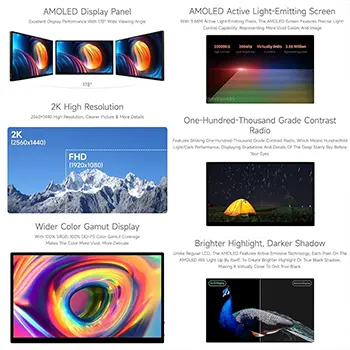
High pixel density ensures sharp graphics. Wearables need 300–450 PPI for clear icons, while larger panels often use FHD for clarity at longer viewing distances. Also consider color accuracy, contrast, and viewing angles.
High pixel density ensures sharp graphics. Wearables need 300–450 PPI for clear icons, while larger panels often use FHD for clarity at longer viewing distances. Also consider color accuracy, contrast, and viewing angles.

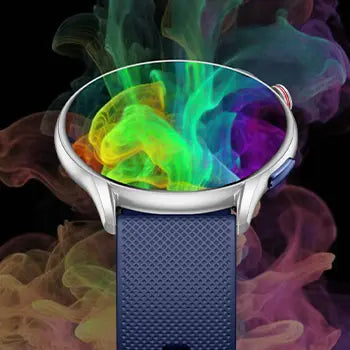
Balance luminance with battery life. Small devices typically use 400–700 nits, while automotive displays exceed 800 nits for daylight visibility. Darker UIs save power since AMOLED pixels turn off individually when showing black.
Balance luminance with battery life. Small devices typically use 400–700 nits, while automotive displays exceed 800 nits for daylight visibility. Darker UIs save power since AMOLED pixels turn off individually when showing black.

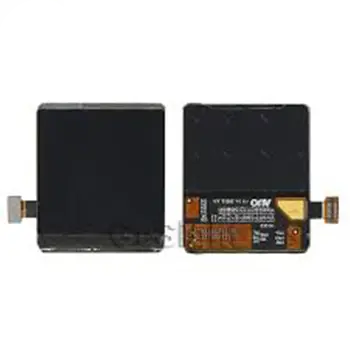
Ensure the display matches your system’s processor. MIPI DSI is common for mid-size AMOLEDs, while SPI or RGB may be used for simpler devices. Check timing, driver IC support, and integration with touch panels.
Ensure the display matches your system’s processor. MIPI DSI is common for mid-size AMOLEDs, while SPI or RGB may be used for simpler devices. Check timing, driver IC support, and integration with touch panels.

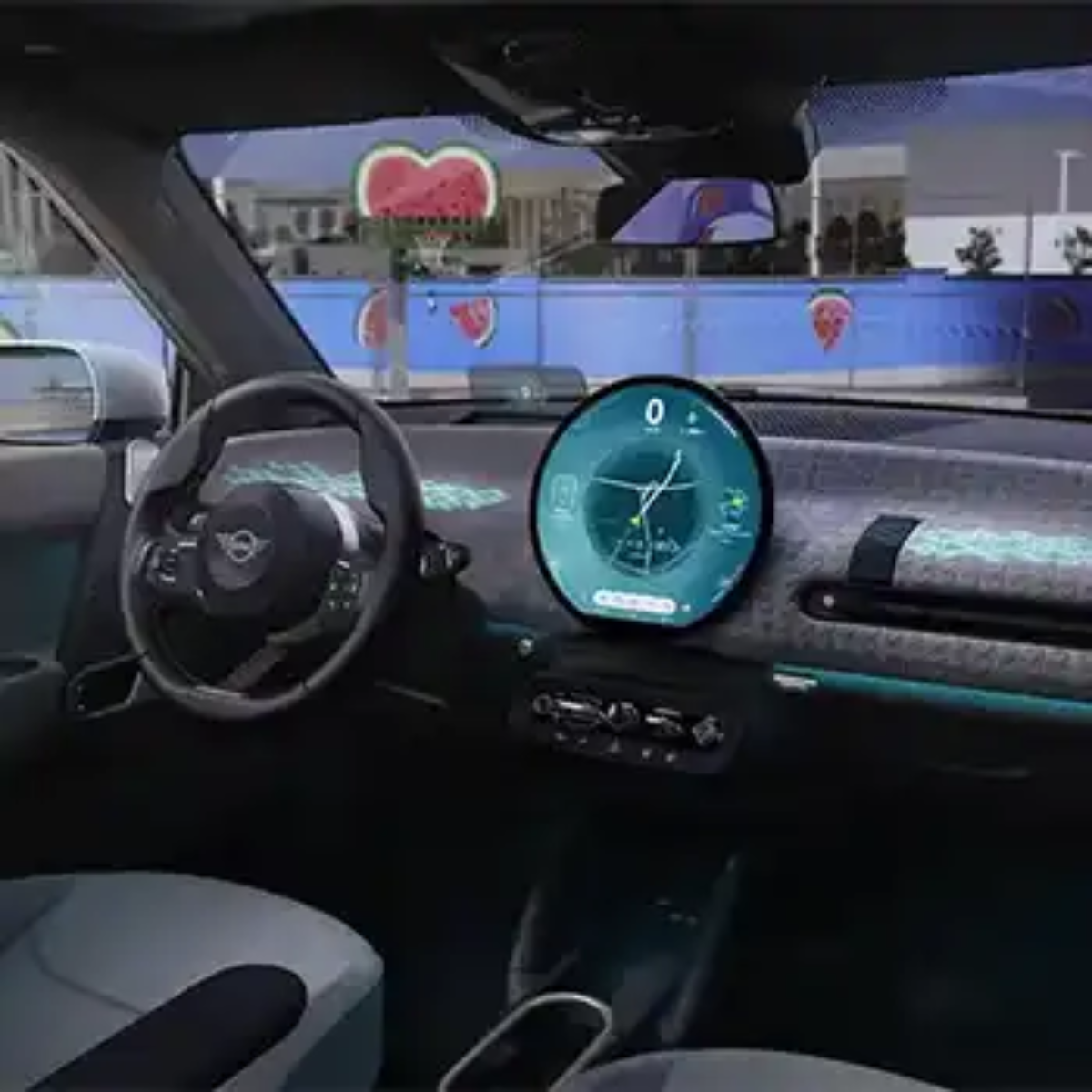
For automotive and industrial use, ensure the panel supports extended temperatures, vibration resistance, and long lifetime. AMOLED suppliers often provide test data on humidity, burn-in, and environmental durability.
For automotive and industrial use, ensure the panel supports extended temperatures, vibration resistance, and long lifetime. AMOLED suppliers often provide test data on humidity, burn-in, and environmental durability.

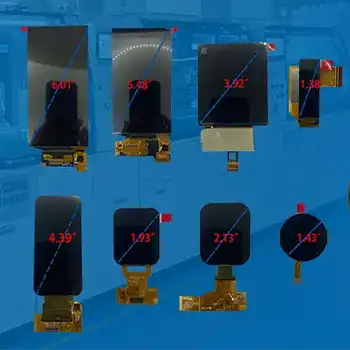
Many projects need custom FPCs, touch integration, or optical bonding. Partner with an experienced manufacturer like Brownopto to get engineering support, quick samples, and tailored AMOLED modules from 1.38–8.0".
Many projects need custom FPCs, touch integration, or optical bonding. Partner with an experienced manufacturer like Brownopto to get engineering support, quick samples, and tailored AMOLED modules from 1.38–8.0".

Featured collection
FAQ
Why is AMOLED preferred for wearable devices?
AMOLED wearable displays are thin, flexible, lightweight, and energy-efficient, making them perfect for smartwatches and fitness trackers.
Can AMOLED displays be used in automotive applications?
Yes, automotive AMOLED displays are increasingly popular due to their readability, color accuracy, and ability to work with curved dashboard designs.
Are AMOLED displays suitable for medical equipment?
Absolutely. AMOLED medical displays offer sharp imaging, high clarity, and reliability, which are essential for diagnostic and monitoring equipment.
What sizes are available for AMOLED displays?
AMOLED displays are available in a wide range, from 1.38” AMOLED for wearables to 8.0” AMOLED for industrial or automotive use.
Can AMOLED modules be customized?
Yes, custom AMOLED display solutions allow adjustments in size, resolution, shape, touch integration, and optical coatings.
What customization options are possible for AMOLED displays?
Options include flexible AMOLED panels, round AMOLED screens, high-brightness AMOLED modules, and integrated touch AMOLED displays.
How to choose the right AMOLED display for my project?
Consider application, size, resolution, brightness, power consumption, and whether a custom AMOLED solution is needed.
What interface options are available for AMOLED displays?
Common AMOLED interfaces include MIPI, SPI, and parallel RGB, depending on module type and application.
Blog posts
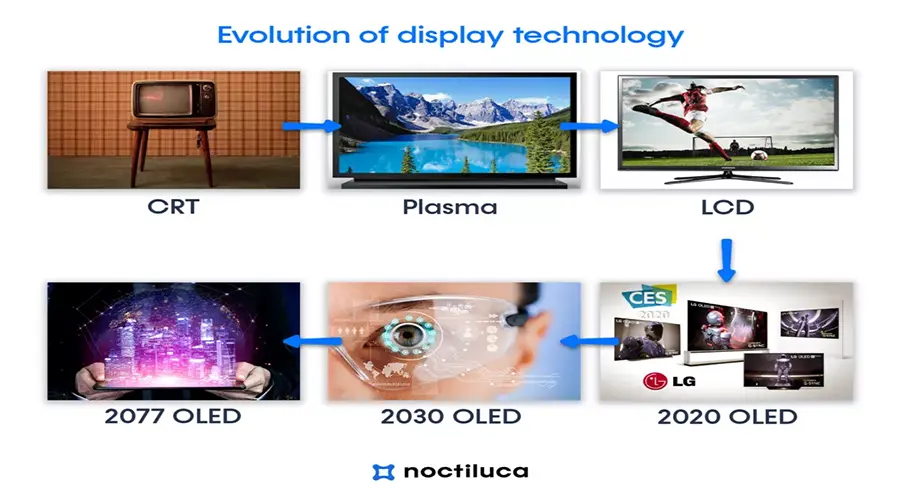
OLED Display: B2B Engineering Guide for Selection & Procurement
OLED Displays (Organic Light Emitting Diode) are self-emissive screens where each pixel lights independently. This enables ultra-thin modules, premium image quality, low-power dark UI perform...
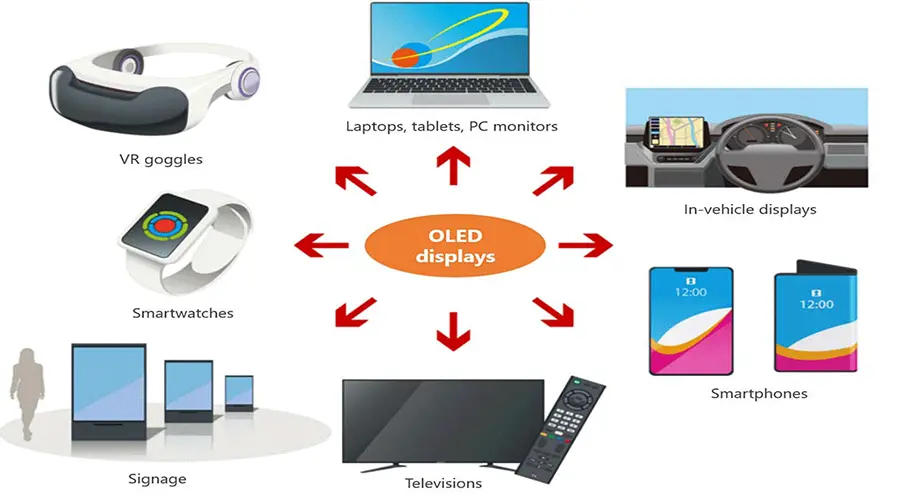
OLED Display Technology: The Future of Visual Innovation
1️⃣ Introduction 2️⃣ What Does OLED Mean? 3️⃣ What Does OLED Stand For? 4️⃣ How Does OLED Work? 5️⃣ Types of OLED Displays 6️⃣ Advantages of OLED Displays 7️⃣ Disadvantages / Limitations 8️⃣ OLED ...
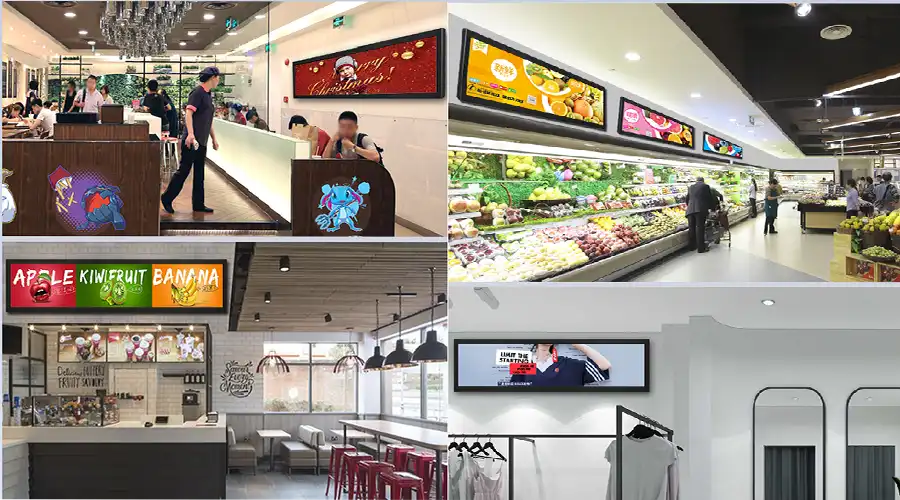
Stretched BAR LCD Displays (8–86"): The Complete Practical Guide
Everything you need to know about ultra‑wide, bar‑type LCD signage: applications, technology, selection, mounting, content, reliability, comparison, customization, FAQs, and purchasing. Ultra...

